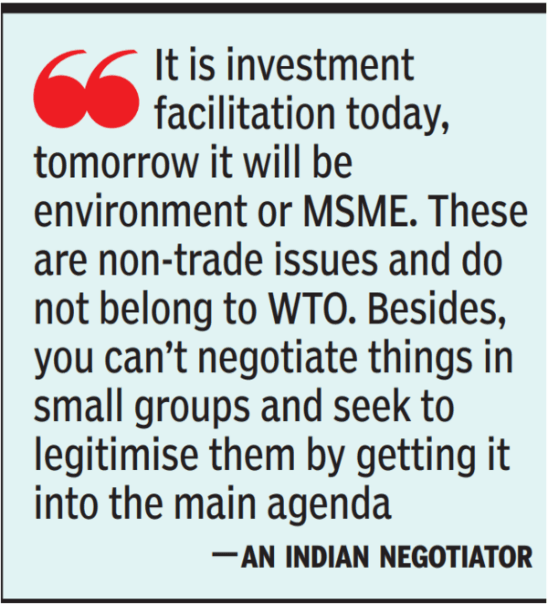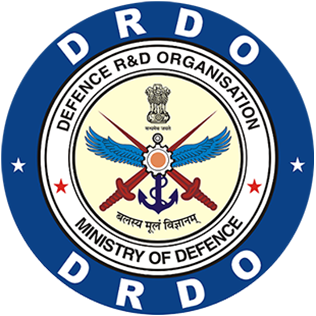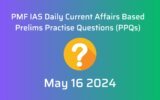
GM Mustard
Subscribers of "Current Affairs" course can Download Daily Current Affairs in PDF/DOC
Subscribe to Never Miss an Important Update! Assured Discounts on New Products!
Must Join PMF IAS Telegram Channel & PMF IAS History Telegram Channel
- Context (TH | DTE): SC criticised the Genetic Engineering Appraisal Committee (GEAC) for not considering the recommendations of the Technical Advisory Committee report (TEC).
Background
- The GE mustard was developed in the 1990s and patented in 2002 by CGMCP. (The Centre for Genetic Manipulation of Crop Plants, University of Delhi).
- it was developed using barnase, barnstar, and bar genes.
Near approval of GM Mustard in 2017
- In September 2015, CGMCP submitted an application to the GEAC requesting permission for the environmental release of DMH-11.
- In 2016, GEAC constituted a Sub-Committee to review the technical details and Dossier.
- The Sub-Committee submitted in its final report, “Assessment of Food and Environmental Safety (AFES)”, approved for the environmental release.
- It concluded that the hybrid DMH-11 does not pose any risk of causing any adverse effects on human and animal health and safety.
- In May 2017, GEAC recommended environmental release of GE Mustard for approval by MoEFCC.
- However, the approval was not given by MoEFCC due to the pressure from activists, scientists, etc.
How did the issue resurface?
- On October 18, 2022, the MoEFCC approved the environmental release of GM mustard.
- In November 2022, the SC issued a status quo. Since A group of petitioners challenged the decision. (activist Aruna Rodrigues, NGO Gene Campaign, etc.)
- They seek a moratorium on releasing any GMOs until independent expert bodies conduct a comprehensive bio-safety protocol in the public domain.
Earlier Committee reports have called for a ban on GMOs
|
India and GM crops
- In 2004, India allowed commercial cultivation of GM cotton (non-edible), which now accounts for more than 90% of the nation’s harvest.
- In 2010, GM eggplant (brinjal) also cleared GEAC’s review, but an indefinite moratorium was placed on its introduction, citing safety concerns.
- Dhara Mustard Hybrid-11 (DMH-11) will be the second GM plant, and the first Indigenously developed GM food crop to reach India’s farmers (if approved).
Science behind DMH11
Barnase-barstar system
|
Why hybrids are needed?
- Crossing of genetically diverse parents results in hybrids with increased yield (20-25 per cent) and adaptation. This phenomenon is known as hybrid vigourorheterosis.
- It has been widely exploited in crops like rice, maize, pearl millet, sunflower and many vegetables.
Government’s argument
- Economic security: Hybrids yield higher than pure-line varieties and will help the country reduce its edible oil deficit.
- India faces a severe shortage of edible oils. Imports of over 14 million tonnes (around Rs 1.5 lakh crore) in foreign exchange in 2021-22.
- The government claims that transgenic seeds could raise yields to 3-3.5 tonnes per hectare while resistant to pests that cause white rust.
|
- Food Security: Given the increased growth of the Indian population and urbanisation, GM crops offer promising solutions to meet the world’s food security needs.
- Safety: Several international organisations (FAO, WHO, OECD) have concluded that biotechnology products are as safe and nutritious.
- Use of technology: A major challenge today is to develop low-input, high-output agriculture. This cannot be achieved without technology.
Concerns against GM Crops
- Threatens the future of apiculture export: Mustard honey crystallises quickly, making export to the US and EU feasible. But these countries also demand GM-free certification.
- No increase in Yield: The highest yields in mustard are from the five countries that do not grow GM mustard (U.K., France, Poland, Germany and the Czech Republic) and not from the GM-growing U.S. or Canada (FAO data).
- Issue of Resistance: Besides White Rust, the mustard crop is also prone to other diseases. The pests and insects may grow resistant to the transgenic crop after a decade.
- Undesirable consequences
- Honeybees could transfer the genes of GM mustard to other plants, which may lead to the growth of unwanted and invasive weeds.
- Transgenic technology, unlike other technologies, is uncontrollable and irreversible after environmental release.
- There are also no long-term studies in the Indian context on the metabolic impact of barstar and barnase genes on the human and animal body.
- Regulatory violations: Civil society groups have put out detailed evidence-based reports to showcase several illegalities concerning regulatory appraisal.
- For example, the full biosafety dossier of GM mustard has not been published on the regulator’s website.
- There has been no health expert involved in GM mustard safety appraisal.
- Explicit objections from numerous states were ignored even though agriculture and health are state subjects per the IC.
- Failure of Bt cotton: There was a proposed link between the poor performance of Bt cotton and many farmers’ suicides, particularly in 2004.
- Issues in classifying GM mustard as a herbicide-tolerant (HT) crop: The government argues it is not a herbicide-tolerant (HT) crop. However, GM mustard is an HT crop because it can withstand herbicides due to the presence of bar genes.
Way forward

Genetic Engineering Appraisal Committee (GEAC)
Rapeseed and Mustard
Marker-Assisted Selection (MAS)
|








![PMF IAS Environment for UPSC 2022-23 [paperback] PMF IAS [Nov 30, 2021]…](https://pmfias.b-cdn.net/wp-content/uploads/2024/04/pmfiasenvironmentforupsc2022-23paperbackpmfiasnov302021.jpg)












